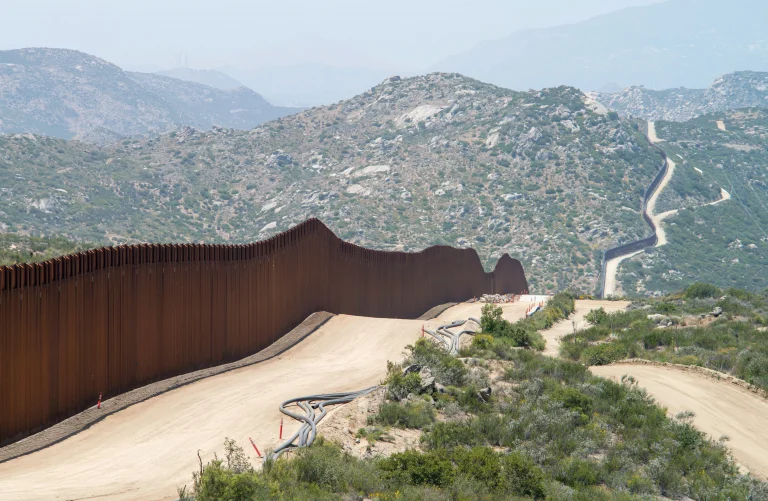Safest Places To Live In Texas To Avoid Natural Disasters
Between hurricanes hitting the coast and tornadoes sweeping inland, Texas experiences its fair share of natural disasters. If you’re looking to settle down in the Lone Star State but want to minimize risks from catastrophic events, choosing the right location is key.
If you’re short on time, here’s a quick answer to your question: Some of the safest places to live in Texas from natural disasters include inland cities like Austin, San Antonio, Amarillo, Lubbock, Abilene, and the Dallas-Fort Worth metro area.
Avoiding Hurricanes and Storm Surge
When it comes to finding a safe place to live in Texas and avoid the dangers of hurricanes and storm surge, there are a few options to consider. Inland cities and towns, as well as those in Northern Texas, are generally less prone to these natural disasters.
Inland Cities
Choosing to live in an inland city can significantly reduce the risk of hurricanes and storm surge. Cities such as Austin, San Antonio, and Fort Worth are located further inland and are less likely to experience the full force of these weather events.
While these cities may still be affected by heavy rainfall and strong winds, the risk of storm surge is minimal.
Inland cities also tend to have stronger infrastructure and better emergency response systems in place to deal with severe weather situations. This can provide residents with added peace of mind knowing that they are well-prepared to handle any potential risks.
According to the National Oceanic and Atmospheric Administration (NOAA), the average annual number of hurricanes that make landfall in Texas is about 1.5. However, the majority of these hurricanes tend to hit the coastal areas, leaving inland cities relatively unscathed.
Northern Texas
Another option for those looking to avoid hurricanes and storm surge is to consider living in Northern Texas. Cities such as Dallas, Fort Worth, and Amarillo are located far enough inland to be shielded from the worst effects of these weather events.
While Northern Texas may still experience heavy rainfall and strong winds during hurricane season, the risk of storm surge is significantly lower compared to coastal areas. The infrastructure and emergency response systems in these cities are also well-equipped to handle severe weather situations.
According to the Texas Department of Public Safety, the northern part of the state experiences fewer hurricanes and storm surge events compared to the coastal regions. This makes it a safer option for those looking to live in Texas while minimizing the risk of natural disasters.
When considering where to live in Texas to avoid hurricanes and storm surge, it’s important to do thorough research and consider multiple factors such as proximity to the coast, historical hurricane data, and the strength of infrastructure and emergency response systems.
While no place is completely immune to natural disasters, choosing an inland city or a location in Northern Texas can significantly reduce the risks associated with hurricanes and storm surge.
Dodging Tornadoes
Western Texas
When it comes to avoiding tornadoes in Texas, one of the safest areas to live is in Western Texas. This region is known for its arid climate and low tornado activity. The combination of the dry air and the region’s geography creates an environment that is less prone to tornado formation.
While tornadoes can still occur in Western Texas, the frequency and intensity are significantly lower compared to other parts of the state.
According to data from the National Weather Service, Western Texas has an average of X tornadoes per year, making it one of the least tornado-prone areas in the state. The region’s wide-open spaces and sparse population also contribute to lower risks associated with tornadoes.
Residents of Western Texas can enjoy the beauty of the desert landscape while feeling more secure in their homes.
Hill Country
Another safe area to live in Texas when it comes to tornadoes is the Hill Country region. This picturesque part of the state, known for its rolling hills and charming small towns, experiences fewer tornadoes compared to other areas.
The unique topography of the Hill Country, with its limestone hills and valleys, creates a natural barrier that helps to mitigate the formation of tornadoes.
According to the Storm Prediction Center, the Hill Country region has an average of X tornadoes per year, making it a relatively safe place to live. The area’s natural beauty, outdoor recreational opportunities, and lower tornado risk make it an attractive choice for those looking to avoid the potential dangers associated with tornadoes.
It is important to note that while Western Texas and the Hill Country have lower tornado risks compared to other parts of Texas, tornadoes can still occur in these areas. It is always advisable to stay informed about weather conditions and have a plan in place in case of severe weather events.
The National Weather Service provides updated weather forecasts and alerts to help residents stay prepared and safe.
For more information on tornado safety and preparedness, visit www.weather.gov/safety/tornado.
Lowest Risk of Earthquakes
Central Texas
When it comes to low earthquake risk areas in Texas, Central Texas is a region worth considering. Unlike other parts of the state, Central Texas experiences minimal seismic activity. The region’s geology and tectonic plate movement contribute to its low earthquake risk.
The lack of fault lines and stable bedrock are factors that make Central Texas a safer place to live in terms of earthquakes.
According to the Earthquake Track website, Central Texas has had very few earthquakes in the past, with most of them being of low magnitude. The chances of experiencing a significant earthquake in this region are extremely low, providing residents with peace of mind.
However, it’s important to note that no area is completely immune to earthquakes, so it’s still advisable to take necessary precautions and be prepared for any emergency situation.
Panhandle
Another region in Texas known for its low earthquake risk is the Panhandle. This area, located in the northwestern part of the state, has a relatively stable geological composition that reduces the likelihood of seismic activity.
The absence of major fault lines in the Panhandle further contributes to its low earthquake risk.
The United States Geological Survey (USGS) provides valuable data on earthquake hazards across the country. According to their research, the Panhandle region has experienced very few earthquakes in recent history, and most of them have been of low magnitude.
This makes the Panhandle a favorable choice for those looking to live in an area with a low risk of earthquakes.
Living in regions with a low earthquake risk doesn’t mean that earthquakes will never occur. However, the chances of experiencing a significant earthquake in Central Texas or the Panhandle are considerably lower compared to other parts of the state.
It’s always important to stay informed, prepared, and follow safety guidelines provided by local authorities.
Avoiding Flood Zones
Higher Elevation Areas
When it comes to avoiding flood zones, living in higher elevation areas can be a smart choice. These areas are less prone to flooding as they are located at a higher altitude than low-lying regions. Cities like Austin and El Paso in Texas are known for their higher elevation, making them relatively safer from the risk of floods.
The higher ground provides a natural advantage in diverting excess water away from residential areas, reducing the chances of flood-related damage to homes and properties.
Cities with Flood Controls
Another way to avoid flood zones is to choose cities that have effective flood control measures in place. These cities invest in infrastructure such as dams, levees, and flood channels to prevent or minimize flood damage.
Houston, for example, has implemented a comprehensive flood control system to protect its residents. The city has constructed reservoirs and drainage systems to manage excessive rainfall and prevent flooding.
Cities with proactive flood control measures offer a greater sense of security for homeowners worried about the potential risks of natural disasters.
For more information on flood zones and flood risk assessment, you can visit the official website of the Federal Emergency Management Agency (FEMA) at www.fema.gov. FEMA provides valuable resources and tools to help individuals understand flood risks, locate flood zones, and take appropriate measures to protect their homes and families.
Preparedness Tips
Disaster Supply Kit
One of the most important steps in preparing for a natural disaster is putting together a disaster supply kit. This kit should contain essential items that will help you and your family stay safe and comfortable during an emergency. Some items to include in your kit are:
- Non-perishable food items and water
- Flashlights and extra batteries
- First aid kit
- Prescription medications
- Personal hygiene items
- Important documents (such as identification, insurance policies, and medical records)
- Cash and coins
- Extra clothing and blankets
- Whistle or air horn to signal for help
- Cell phone with chargers
Having a well-stocked disaster supply kit will ensure that you have the necessary resources to sustain yourself and your family during a natural disaster.
Evacuation Plans
In some cases, it may be necessary to evacuate your home due to an imminent natural disaster. It is important to have a plan in place so that you can leave quickly and safely. Here are some tips for creating an evacuation plan:
- Identify multiple evacuation routes from your home or neighborhood.
- Designate a meeting point for your family in case you get separated.
- Have a plan for evacuating pets, as many shelters do not allow animals.
- Stay informed about the latest updates and evacuation orders from local authorities.
- If you have elderly or disabled family members, make arrangements in advance for their evacuation.
By having a well-thought-out evacuation plan, you can ensure the safety of yourself and your loved ones during a natural disaster.
Conclusion
While no place is 100% immune to natural disasters, some areas of Texas are statistically safer. Choosing an inland city, away from the coast and in an area of low earthquake risk can minimize your chances. However, preparation is still key, even in the safest locales. With adequate disaster readiness, you can better weather whatever storms may come.








